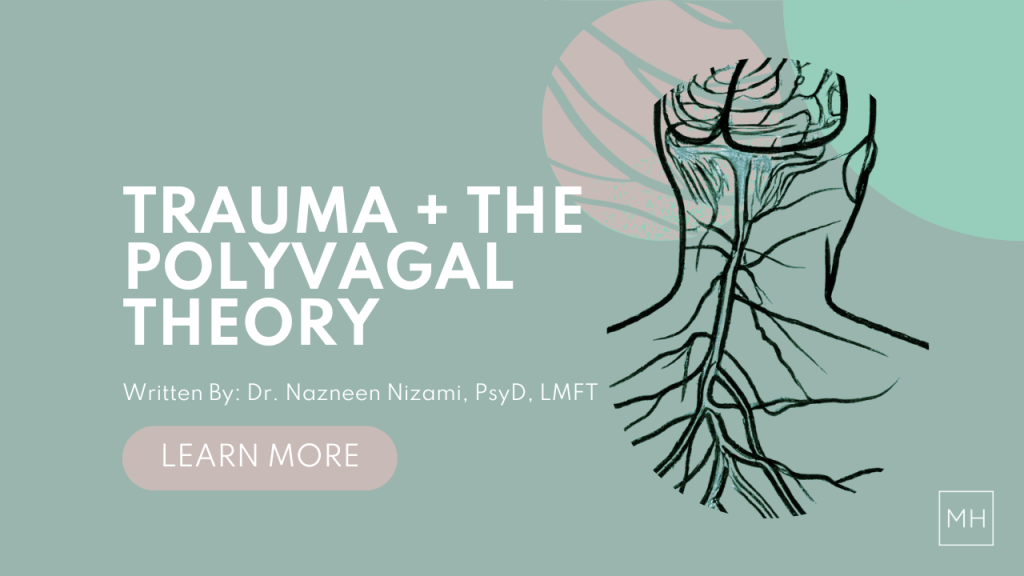Featuring: Dr. Nazneen Nizami, PsyD, LMFT
The Safe and Sound Protocol (SSP) is an innovative clinical intervention designed to support trauma-informed and intensive therapeutic work. Rooted in Polyvagal Theory, SSP is an auditory-based approach that helps regulate the nervous system by targeting how we perceive safety and danger through sound. Through carefully filtered music that emphasizes specific frequencies and tones, SSP helps clients retrain their body’s responses—enhancing the ability to find safety, connection, and calm in the present moment.
A Brief Look into SSP
- Flexible and Adaptable: SSP can be used as both an independent self-regulation tool and a co-regulatory intervention facilitated by a therapist. This flexibility allows clients to experience support through guided sessions or to practice nervous system regulation on their own once familiar with the process.
- Personalized Listening Pathways: The program includes four distinct auditory pathways—each designed to meet clients where they are in their healing journey. Whether the goal is to increase connection, build resilience, or deepen self-regulation, these sound-based programs can be tailored to each individual’s needs and therapeutic goals.
- Accessible Anywhere: SSP can be delivered in person or remotely, making it accessible for clients regardless of location or mobility. This hybrid model supports continuity of care and offers flexibility for clients engaging in intensive or ongoing therapy.
- Collaborative and Measurable: Providers have access to tools that track client engagement and progress over time. This allows for consistent monitoring, enhances accountability, and gives both client and clinician a clear sense of how the nervous system is adapting and strengthening throughout treatment.
- Grounded in Connection: At its core, SSP emphasizes safe, relational experiences—supporting clients not only in calming their nervous system but also in fostering a deeper sense of trust, connection, and belonging within themselves and others.
How SSP + EMDR Work together
Eye Movement Desensitization and Reprocessing (EMDR) is a structured, evidence-based therapy that helps individuals process and heal from traumatic memories. It works by using bilateral stimulation—such as guided eye movements, tapping, or sounds—to activate both sides of the brain while recalling distressing experiences, allowing the memory to be reprocessed in a less emotionally charged way. EMDR is widely used in trauma therapy because it helps reduce the intensity of painful memories, promotes emotional regulation, and supports lasting nervous system healing.
For individuals who have experienced trauma, the vagus nerve—a key player in our body’s regulation system—often remains on high alert. This can lead to a persistent state of hypervigilance and difficulty returning to calm after stress or emotional activation. When clients engage in EMDR or other re-processing therapies, revisiting distressing memories can temporarily heighten this sensitivity. To support regulation, Dr. Nizami shares:
“Integrating SSP with EMDR sessions has been a helpful tool here at The Mental Health Collective. SSP provides a structured intervention that becomes a secondary support for the nervous system after reprocessing a traumatic event. Activating the present-day sensory system helps the client return to their window of tolerance and strengthens their capacity for distress tolerance. So, when you combine SSP’s nervous system regulation focus with EMDR’s strong evidence base for trauma recovery, you’re offering clients a robust pathway: regulation + resolution.”
Research on SSP suggests that helping the nervous system both tolerate distress and return to regulation is key. Likewise, EMDR provides a framework to process traumatic memories, while SSP can strengthen the regulatory system around that processing. As Dr. Nizami states:
“It’s equally important to prepare the nervous system before distress as it is to support it afterward. SSP can be used both as a preparatory tool and as a resource for recovery.”
By intentionally scheduling brief SSP sessions before or after trauma-focused work like EMDR, clients can strengthen their nervous system’s flexibility—its ability to tolerate distress and then return to a state of safety. Ultimately, that capacity for regulation and recovery lies at the heart of successful trauma therapy.
Integrating SSP with EMDR offers clients not just a method for processing trauma, but a pathway to lasting resilience and well-being. By combining evidence-based memory reprocessing with nervous system regulation, clients can safely navigate distressing experiences while building the skills to return to calm, connection, and safety. At its core, this integration empowers individuals to reclaim a sense of control, strengthen their inner resources, and move forward in their healing journey with confidence and support.
DO YOU HAVE A QUESTION?
Send our team a message or call 888.717.9355




